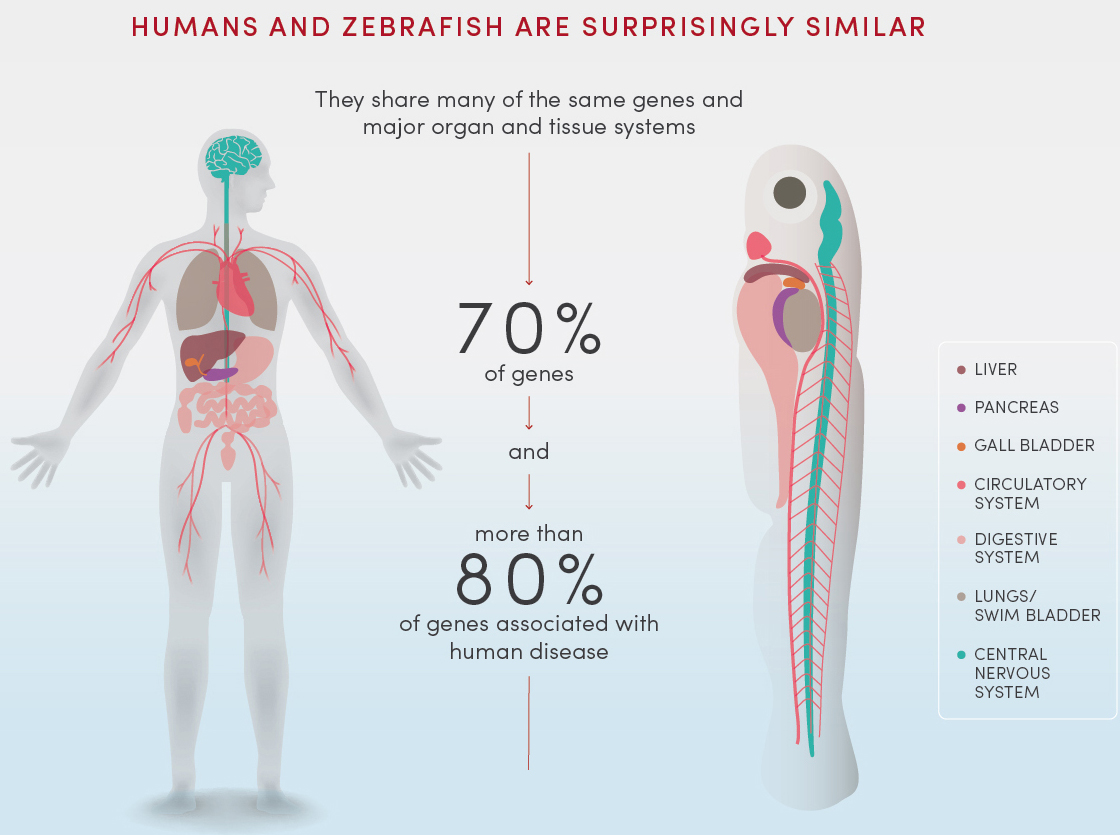Why use animals for research?
Research with animals is essential for:
- developing and testing treatment for diseases and disabilities;
- finding ways to protect the safety of people, animals, and the environment;
- advancing scientific understanding.
Progress in these research areas is possible because animals are like humans in many ways. We share major organ systems that perform essential functions such as breathing, digesting, hearing, seeing, moving, and reproducing. The similarities extend even deeper, to the microscopic level. Many of our cellular processes are the same, as is much of our DNA. Humans share 92 percent of their genes with mice and 70 percent with another widely used research animal, zebrafish.
Direct comparisons between human and animal biology enable scientists to advance knowledge and ensure medical treatments are safe and effective while minimizing risks for people and pets.

Are there alternatives to using animals in research?
Many valuable non-animal research models exist, including computer-modeling, cell culture, or bacterial and yeast systems. These models are useful for some types of research. For instance, cell and tissue cultures can determine toxicity or benefits of drug compounds in early stages of investigation. But ultimately chemical compounds must also be tested on a living animal to discover its effectiveness and detect any possible side effects.
While new technologies emerge every day, currently no alternatives exist that adequately mimic the complex nature of an entire living system with its intricate network of organs, tissues, cells, and biological systems for communicating between them.
Can fewer animals be used in research?
We carefully screen research proposals and actively work with scientists to replace, refine, and reduce the animals used in research. Please read Our Commitment to Responsible Research. We not only abide by these guiding principles, but also strive to improve upon them.
In addition to replacing animals whenever possible, we are accelerating development and use of models and tools that help us do so. The goal is to work toward addressing as many important scientific questions as possible without the use of animals.
In parallel, we are commited to ensuring that the number of animals used stays low by carrying out the best research possible. That means appropriately designing and analyzing experiments so they are robust and reproducible, minimizing a need to repeat them unnecessarily.
We continually refine experiments by analyzing the impact of technologies and techniques on animals and then incorporate the best methods that found to improve animal welfare.
Why do you need to do research with monkeys?
Though frequently depicted on TV or film as the standard, monkeys and nonhuman primates account for less than one-half of one percent of animals in current medical research. More than 90 percent are small animals, such as rodents and fish.
Still, research with large animals is vital. Because nonhuman primates are the closest to humans biologically and physiologically, they provide invaluable insights into many conditions including AIDS, obesity, diabetes, and cancer. These animals have enabled researchers to mount rapid responses to emerging diseases such as Zika, Ebola and COVID-19. Primate research has also increased our knowledge of human brain function and its role in neurological illnesses such as Alzheimer’s and Parkinson’s disease.
All research animals at the U — from the smallest to the largest — are monitored daily by compassionate veterinarians and professional staff who tend to their necessities, provide veterinary care and serve the animals’ social and cognitive needs.
